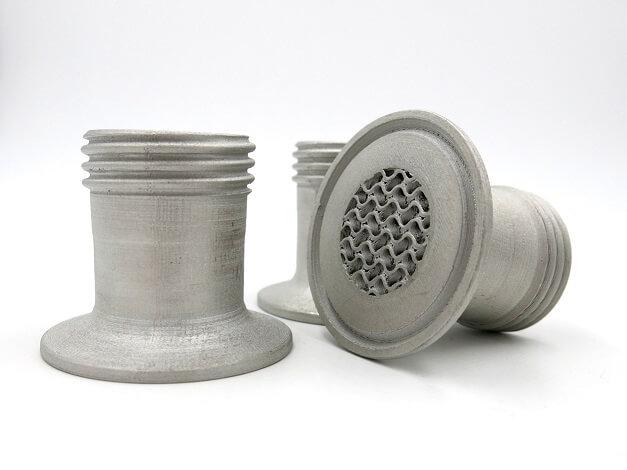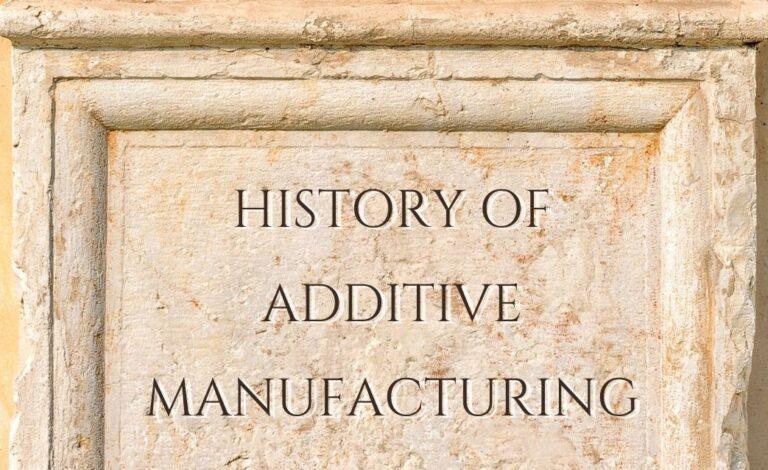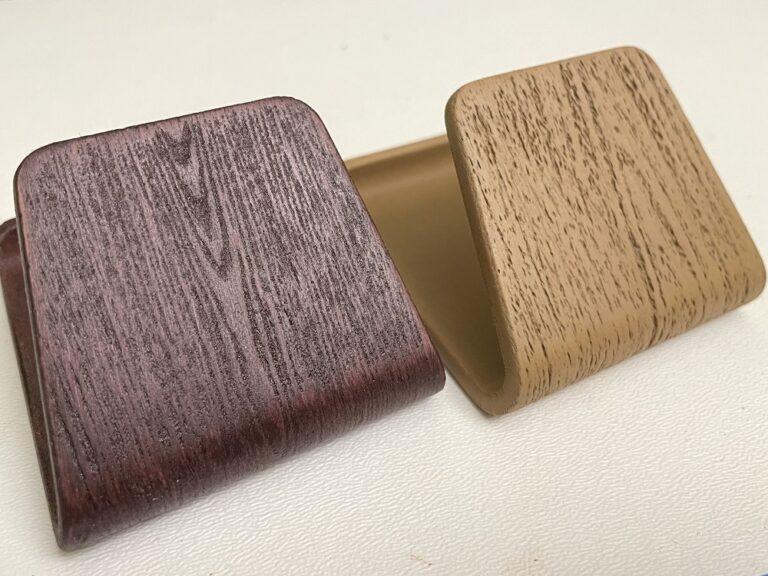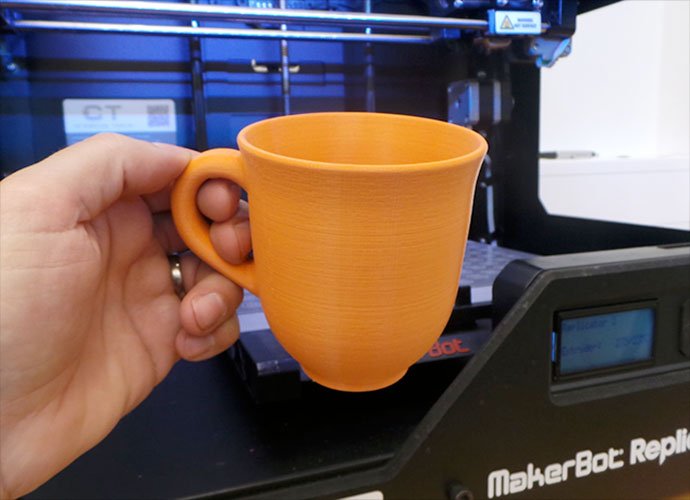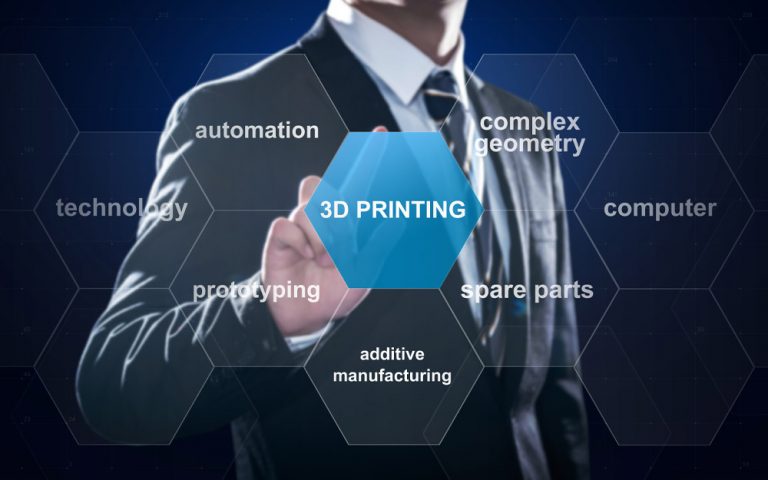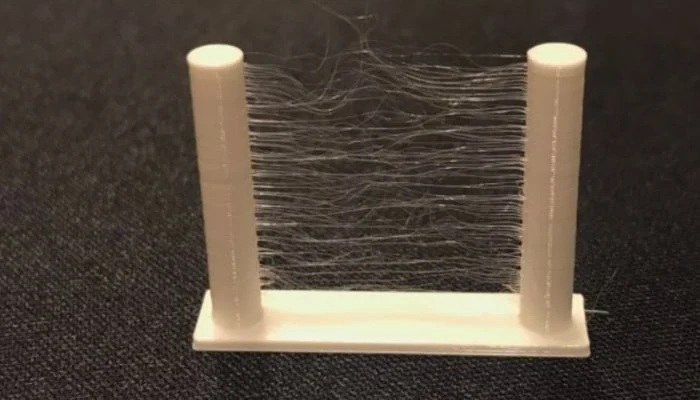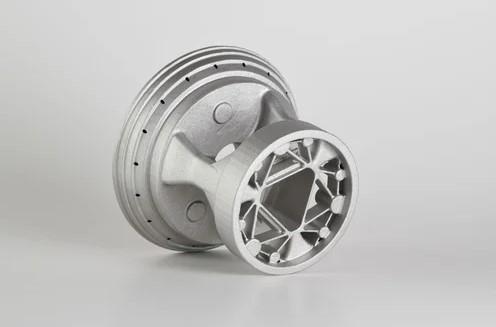Introduction
The way we design and produce goods across several industries has been revolutionized by recent significant developments in 3D printing technology. Metal filament 3D printing is an innovation in manufacturing. It provides an economical method for creating high-quality metal parts. Metal filament 3D printing is becoming increasingly important in the future of manufacturing. This technology has many capabilities that we continue to explore. In this article, we’ll discuss metal filament 3D printing’s main characteristics and design considerations. We’ll also talk about the leading suppliers of metal filament and how it’s opening up new opportunities. Metal filament 3D printing is transforming the industrial sector. Prepare to explore the manufacturing future at your fingertips!
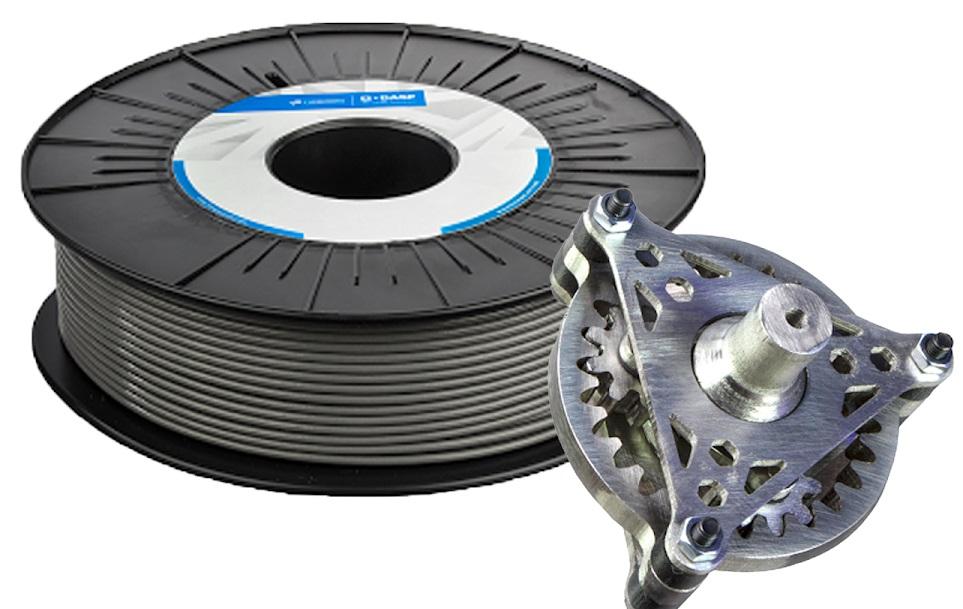
Brief overview of 3D printing technology
3D printing, or additive manufacturing, revolutionized product design and production in recent decades. Metal filament printing produces strong, detailed metal pieces with complex geometries. The method uses a combination of metal particles and plastic binders. This technique is more accessible than traditional metal 3D printing methods. Metal filament printing is available to experts and amateurs alike. Traditional metal 3D printing can require expensive and specialized equipment.
Introduction to metal filament 3D printing
In the field of additive manufacturing, metal filament 3D printing has emerged as a revolutionary development. Metal filament printing uses a special combination of metal particles and plastic binders. This method produces strong, high-quality metal pieces with precise details and complex geometries. Metal filament printing makes metal manufacturing accessible to a wider variety of experts and amateurs. Existing metal 3D printing techniques can require expensive and specialized equipment.
Metal filament 3D printing is set to revolutionize metal component production. The technology is compatible with various industries, including aerospace and automotive. It is also suitable for medical and creative applications. Affordability is one of the factors that make it an attractive option. Metal filament 3D printing works with numerous 3D printer models. The technology presents new possibilities for manufacturing and design. The cutting-edge technology has the potential to unlock new potential.
Importance of metal filament in the future of manufacturing
The metal filament is significant for future manufacturing due to its accessibility, affordability, and versatility.
Traditional metal manufacturing processes can be lengthy, expensive, and labor-intensive.
Smaller companies and independent producers may struggle to obtain traditional metal manufacturing technology. Metal filament 3D printing lowers entrance hurdles and enables increased creativity. Metal filament 3D printing can lead to more effective manufacturing of high-quality metal components.
The Metal filament enables the printing of complex geometries and detailed designs for lightweight and strong parts. It brings opportunities for aerospace, automotive, and medical industries to create functional parts. Metal filament 3D printing is set to play a crucial role in defining the future of manufacturing. It enables more sustainable, effective production methods as the technology develops and becomes more widely adopted. The use of metal filament is expected to foster innovation and revolutionize the manufacturing landscape.
Understanding Metal Filament
Understanding metal filament composition is crucial for 3D printing with it. Metal filament contains micron metal powders like stainless steel or copper. Plastic binders, typically PLA or PVA, hold the metal particles together. This setup preserves the metal component’s properties while extruding through a regular nozzle. Special characteristics of metal filament enable strong, durable, and chemically resistant parts to be created.
After printing, debonding, and sintering remove the plastic binder, leaving a solid metal part behind. The metal filament is affordable and practical for complex, strong, and chemically resistant metal parts. It can be used with a variety of 3D printers. Understanding of metal filament will advance as technology develops, opening new opportunities. Metal filament offers a wide range of applications in the field of additive manufacturing.
Composition of metal filament
The composition of metal filament plays a crucial role in determining its properties and potential applications in 3D printing. Typically, metal filament consists of a blend of finely ground metal particles and a plastic binder. Metal filaments can have a metal content ranging from 80% to 85%. Different metal filaments use different metals, such as stainless steel, copper, bronze, and aluminum. Each metal offers unique properties and advantages for specific applications.
The plastic binder carries metal particles in the metal filament. PLA or PVA are common materials for the binder. It allows the filament to be extruded smoothly. The filament’s composition affects printing temperature and post-processing requirements. Advances in technology can lead to new metal filament compositions. This can broaden possibilities for additive manufacturing applications.
Differences between metal filaments for parts and decorative filaments
Understanding the distinctions between metal filaments is crucial when exploring metal filaments. Filaments for functional parts have a high metal content, between 80% and 85%. These filaments create strong, durable, and chemically resistant products. They are ideal for industries like aerospace, automotive, and medicine. They can tolerate severe stress or wear and are perfect for building strong components.
The metal composition of decorative metal filaments, on the other hand, often ranges from 30% to 60%. They don’t have the same strength and endurance as filaments with a higher metal content, but they still have the aesthetic attraction of a metal finish. Jewelry, sculptures, and display items are examples of projects that might benefit from decorative metal filament over functional ones.
The intended use and desired characteristics of the finished product must be taken into account when choosing a metal filament for a project since the decision between functional and decorative filaments can have a big impact on the result.
Bound metal deposition (BMD) vs. metal filament
Bound Metal Deposition (BMD) and metal filament are two distinct approaches to 3D printing metal parts, each with its advantages and limitations. Understanding the differences between the two methods can help determine the best choice for a specific project or application.
Bound Metal Deposition (BMD)
Desktop Metal developed a proprietary technology called Bound Metal Deposition (BMD). It builds on Fused Deposition Modeling (FDM) principles. BMD uses a blend of metal powder and a polymeric binder, similar to metal filament. It extrudes the material through a nozzle, more similar to traditional FDM. The post-processing of printed parts involves a two-step process, and they are known as “green parts.” It involves debinding to remove the binder and sintering to fuse the metal particles. This results in a dense metal part. BMD is faster and more accurate than metal filament 3D printing. However, it requires specialized equipment and can be more expensive.
Metal filament
Metal filament, on the other hand, is a more accessible and affordable option for producing metal parts through 3D printing. Standard 3D printers can extrude a blend of metal particles and plastic binders to create metal filaments. Post-processing steps involve debinding and sintering, similar to BMD. The process can be slower and less accurate than BMD. The metal filament is a popular choice due to its lower cost and compatibility with existing 3D printers. It’s ideal for small businesses, hobbyists, and professionals who want to create metal parts without specialized equipment.
In conclusion, the choice between BMD and metal filament depends on factors such as budget, desired accuracy, and available equipment. BMD may be more suitable for professional applications requiring high precision and speed, while metal filament provides a cost-effective and accessible option for a broader range of users.
Advantages of Metal Filament 3D Printing
Metal filament 3D printing offers numerous advantages that make it an appealing option for various industries and applications. Some of the key benefits include:
Accessibility and affordability
Metal filament 3D printing allows for the production of high-quality metal parts without the need for expensive, specialized equipment. Metal filament 3D printing is more accessible and cost-effective. Small businesses, hobbyists, and professionals can benefit. Accessibility and affordability are two key advantages. They have contributed to the growing popularity of metal filament 3D printing. This technology revolutionizes the production of metal components. It makes metal 3D printing more attainable for a diverse range of users.
Accessibility
Various users, including small businesses, hobbyists, and professionals can adopt metal filament 3D printing with ease. Metal filament 3D printing doesn’t require specialized equipment like traditional metal manufacturing methods. Instead, it can be performed using a wide range of standard 3D printers with heated beds and hardened steel nozzles. This compatibility means that individuals and organizations can take advantage of existing equipment or invest in more affordable 3D printers to create metal parts, without the need for costly and complex machinery.
Affordability
Affordability is another significant advantage of metal filament 3D printing. The cost of traditional metal manufacturing methods, such as CNC machining or metal injection molding, can be prohibitive for smaller businesses or individual creators. Metal filament 3D printing, on the other hand, offers a more cost-effective solution for producing high-quality metal parts. The lower cost of metal filament material, combined with the reduced need for specialized equipment, makes this technology a more budget-friendly option for creating metal components.
Metal filament 3D printing is affordable and accessible, breaking down entry barriers in metal manufacturing. The technology fosters innovation and enables small businesses to compete, encouraging creative exploration and product development. As metal filament 3D printing evolves and gains adoption, its impact on manufacturing will grow, reshaping metal component production and design.
Wide range of compatible 3D printers
Metal filaments can be used with a variety of standard 3D printers equipped with heated beds and hardened steel nozzles. This compatibility means that users can take advantage of existing equipment, further reducing the barriers to entry for metal 3D printing.
Expanding Opportunities for Users
Metal filament 3D printing works with many 3D printers, from professional to hobbyist ones. It doesn’t require an expensive, specialized metal 3D printer. Existing equipment or affordable options can be used. This compatibility is a significant advantage. It appeals to various users, from professionals to hobbyists.
Key Requirements for Compatibility
This broad compatibility is achieved since the metal filament is composed of a blend of metal particles and a plastic binder, which allows it to be extruded through standard 3D printer nozzles. To accommodate metal filament, 3D printers need to have a heated bed and a hardened steel nozzle that can withstand the abrasive nature of the material. These requirements are generally met by a variety of Fused Deposition Modeling (FDM) printers, which are widely used for printing with common materials like PLA and ABS.
Empowering Innovation and Skill Development
The ability to use metal filament with a diverse range of 3D printers empowers users to explore metal 3D printing without significant upfront investment, making it an attractive option for small businesses, educational institutions, and individual creators. This accessibility enables users to experiment with metal 3D printing, develop new skills, and create innovative designs that may have been previously unattainable.
Encouraging Competition Among Manufacturers
Moreover, the wide range of compatible 3D printers encourages competition among manufacturers, leading to continuous improvements in printer capabilities and features, as well as more affordable options for consumers. As a result, metal filament 3D printing becomes more accessible and versatile, expanding its potential applications and driving innovation in the manufacturing sector.
Breaking Barriers and Driving Innovation
In conclusion, the compatibility of metal filament with a wide range of 3D printers removes significant barriers to entry in metal 3D printing, fostering innovation and enabling more users to explore and benefit from this groundbreaking technology.
Complex geometries and intricate designs
Metal filament 3D printing enables the creation of parts with intricate details and complex geometries that may be difficult or impossible to produce using traditional manufacturing methods. This capability opens up new possibilities for innovative designs and lightweight, yet strong components, particularly in industries such as aerospace, automotive, and medical.
Unleashing Creativity with Advanced Geometries
Metal filament 3D printing opens up new possibilities for creating parts featuring complex geometries and intricate designs that may be challenging or even impossible to produce using traditional manufacturing methods. This capability allows designers, engineers, and artists to push the boundaries of their creativity and explore new avenues in product development and artistry.
Overcoming Limitations of Traditional Methods
Traditional metal manufacturing methods, such as CNC machining or metal injection molding, often have limitations when it comes to producing components with intricate details or internal structures. These methods rely on the removal or shaping of material, which can be difficult or time-consuming when working on complex designs. In contrast, metal filament 3D printing utilizes an additive process that builds objects layer by layer, enabling the creation of sophisticated geometries without the constraints of subtractive methods.
Enabling Lightweight and High-Performance Parts
The ability to create complex structures with metal filament 3D printing is particularly valuable in industries such as aerospace, automotive, and medical, where lightweight and high-performance components are critical. By leveraging this technology, engineers can design parts with internal lattice structures, organic shapes, or topology-optimized features that minimize weight while maintaining strength and durability. This leads to more efficient and sustainable products, as well as new design possibilities.
Customization and Personalization
In addition to enabling the creation of advanced geometries, metal filament 3D printing also allows for a high level of customization and personalization. This is particularly relevant in sectors like jewelry and fashion, where unique and intricate designs are highly valued. With metal filament 3D printing, designers can create one-of-a-kind pieces tailored to individual preferences or develop intricate patterns that showcase their artistic vision.
Transforming Design and Manufacturing
In summary, metal filament 3D printing’s ability to produce complex geometries and intricate designs is transforming the way we approach design and manufacturing. By overcoming the limitations of traditional methods and enabling new levels of creativity, this technology is paving the way for innovative products and applications across various industries.
Customization and rapid prototyping
Metal filament 3D printing allows for the quick production of customized parts, making it ideal for rapid prototyping and small-batch manufacturing. This advantage enables businesses to iterate designs quickly and respond to market demands more efficiently.
Accelerating Product Development Cycles
Metal filament 3D printing’s ability to facilitate customization and rapid prototyping significantly accelerates product development cycles. This advantage allows businesses, engineers, and designers to quickly iterate on their designs, test new ideas, and bring products to market more efficiently.
Tailored Solutions for Unique Requirements
Customization is a key aspect of metal filament 3D printing that allows users to create bespoke components tailored to specific requirements or preferences. This flexibility enables the development of unique solutions for specialized applications, such as customized medical implants or tailor-made automotive parts. As a result, manufacturers can better address the needs of their clients and stand out in a competitive market.
Streamlining the Prototyping Process
Rapid prototyping is another major benefit of metal filament 3D printing. Traditional manufacturing methods can be time-consuming and costly when it comes to creating prototypes, particularly if multiple iterations are required. With metal filament 3D printing, prototypes can be produced quickly and cost-effectively, allowing for faster design validation and adjustments. This streamlined process enables businesses to make informed decisions and optimize their designs more efficiently.
Enhancing Collaboration and Communication
Metal filament 3D printing also facilitates better collaboration and communication between different stakeholders in the product development process. By creating physical prototypes, designers and engineers can effectively communicate their ideas to clients, colleagues, or investors. These tangible representations of concepts allow for a better understanding of the product’s functionality, appearance, and potential improvements, ultimately leading to a more refined and successful final product.
Empowering Innovation and Efficiency
In conclusion, the customization and rapid prototyping capabilities of metal filament 3D printing empower businesses and creators to innovate more effectively and bring their products to market faster. By streamlining the product development process and enabling tailored solutions, this technology is revolutionizing the way we design, iterate, and manufacture across various industries.
Reduced material waste
Unlike subtractive manufacturing methods, metal filament 3D printing builds objects layer by layer, resulting in less material waste. This efficiency contributes to a more sustainable and cost-effective production process.
Sustainable Manufacturing with Minimal Waste
One of the notable benefits of metal filament 3D printing is the significant reduction in material waste compared to traditional manufacturing methods. By embracing this environmentally friendly technology, businesses can minimize their ecological footprint while also improving cost-efficiency in the production process.
Additive Manufacturing vs. Subtractive Methods
Metal filament 3D printing is an additive manufacturing process, where material is deposited layer by layer to create the desired object. This approach stands in contrast to subtractive methods, such as CNC machining, where the material is removed from a larger block or piece to achieve the final shape. Additive manufacturing inherently results in less waste, as the material is only used where needed, and excess material can often be reused in future prints.
Efficient Material Utilization
By reducing material waste, metal filament 3D printing enables more efficient material utilization, which translates to cost savings for manufacturers. By using only the necessary amount of material for each part, businesses can minimize their material expenses and maximize the value of their resources. This efficiency is particularly beneficial when working with expensive metal materials, where waste reduction can lead to substantial cost savings.
Environmental Impact
The reduced material waste associated with metal filament 3D printing also has positive implications for the environment. By minimizing the amount of waste produced during the manufacturing process, businesses can decrease their overall environmental footprint and contribute to a more sustainable future. This eco-friendly approach aligns with the growing global emphasis on environmental responsibility and can also serve as a selling point for companies looking to appeal to environmentally conscious consumers.
Embracing Efficiency and Sustainability
In summary, metal filament 3D printing’s ability to reduce material waste offers significant advantages in terms of cost-efficiency, resource utilization, and environmental sustainability. By adopting this technology, manufacturers can improve their production processes, minimize waste, and contribute to a more sustainable future.
Production of strong, chemically resistant parts
Metal filament prints, once post-processed through debinding and sintering, yield solid metal parts with high strength, durability, and chemical resistance. These properties make metal filament 3D printed parts suitable for a variety of demanding applications across different industries.
Enhanced Durability and Resistance in Metal 3D Printed Parts
Metal filament 3D printing offers the advantage of producing parts with remarkable strength and chemical resistance, making them suitable for various applications across industries. These qualities ensure that components manufactured using metal filament can withstand harsh environments and perform effectively in demanding situations.
Superior Mechanical Properties
When the metal filament is used in 3D printing, the resulting parts exhibit impressive mechanical properties, such as high tensile strength and hardness. This is due to the high percentage of metal powder infused within the plastic binder, which, after post-processing, forms a solid metal part. These strong and durable components can be utilized in industries like automotive, aerospace, and heavy machinery, where parts are subject to high stresses and loads.
Corrosion and Chemical Resistance
Another key feature of metal filament 3D printed parts is their resistance to corrosion and chemicals. This characteristic makes them ideal for use in harsh or corrosive environments, such as the oil and gas industry or chemical processing plants. By employing metal filament 3D printing, businesses can create parts that maintain their integrity and functionality even when exposed to aggressive chemicals or extreme conditions.
Heat Resistance
Metal parts produced using metal filament 3D printing also exhibit excellent heat resistance, making them suitable for high-temperature applications. This capability can be vital in industries like aerospace and automotive, where components often need to withstand elevated temperatures without deforming or losing their structural integrity.
Versatility in Material Selection
The range of metal filaments available for 3D printing, including stainless steel, bronze, copper, and more, enables the production of parts with specific properties tailored to the desired application. This versatility allows manufacturers to select the ideal material for their needs, further enhancing the strength, chemical resistance, and overall performance of the finished parts.
Metal Filament 3D Printing for High-Performance Parts
In summary, metal filament 3D printing enables the creation of strong, chemically resistant parts that can withstand demanding applications and environments. This capability, combined with the numerous benefits of 3D printing technology, makes it a valuable solution for various industries seeking high-performance components that meet their specific requirements.
Design Considerations for Metal Filament Printing
When working with metal filament 3D printing, it is essential to take into account specific design considerations to ensure the successful production of parts with the desired properties and functionality. By understanding and implementing these guidelines, designers and engineers can optimize their designs for metal filament printing and fully harness the potential of this technology.
Tolerance and Shrinkage
Due to the post-processing steps involved in metal filament 3D printing, parts may experience shrinkage, which can affect their dimensional accuracy. It is crucial to consider this factor in the initial CAD models and compensate for it by adjusting the dimensions accordingly. Furthermore, it is essential to account for tolerances, particularly when designing parts with tight fits or assemblies.
Wall Thickness and Height-to-Width Ratios
When designing parts for metal filament 3D printing, it is necessary to maintain appropriate wall thicknesses to ensure the structural integrity of the final component. Additionally, keeping height-to-width ratios under 3:1 and wall height-to-width ratios below 6:1, as suggested by MakerBot’s guide, can help prevent warping and deformation during the post-processing stages.
Support Structures and Overhangs
Consideration should be given to support structures and overhangs when designing for metal filament printing. It is essential to minimize overhangs and use support structures where necessary to ensure proper adhesion and prevent deformation. Also, consider incorporating self-supporting angles and features to reduce the need for additional support materials.
Internal Structures and Lattice Designs
One of the key advantages of metal filament 3D printing is the ability to create intricate internal structures and lattice designs. By incorporating these features into the design, engineers can optimize the strength-to-weight ratio of the part, which is particularly valuable in industries like aerospace and automotive.
Post-Processing Requirements
When designing parts for metal filament 3D printing, it is crucial to consider the post-processing requirements, such as debinding and sintering. Keep in mind that the parts will undergo these additional steps, which may affect the final properties and appearance of the component. Ensure that the design is suitable for these processes and can withstand the necessary treatments.
Optimizing Design for Metal Filament 3D Printing
In summary, taking into account these design considerations is crucial for successful metal filament 3D printing. By understanding and implementing these guidelines, designers, and engineers can optimize their designs for this technology, ensuring the production of high-quality, functional, and aesthetically pleasing metal components.
Printer settings and manufacturer certifications
Achieving optimal results with metal filament 3D printing requires paying close attention to the printer settings and ensuring compatibility with the specific metal filament being used. Many 3D printer manufacturers have certified certain metal filaments for use on their printers, providing ideal settings and guidelines to help users get the best results.
Printer settings such as nozzle temperature, bed temperature, and print speed play a critical role in the success of metal filament printing. Manufacturers typically provide recommended settings for their certified filaments, which can range between 180 ºC and 220 ºC for nozzle temperature and may require a heated bed. It is important to follow these recommendations and fine-tune the settings based on the specific filament and printer being used.
Additionally, print speeds for metal filament are generally slower compared to other materials, with recommended speeds typically between 30 mm/s and 40 mm/s. Adhering to these guidelines can ensure a smooth and consistent print, reducing the risk of issues such as warping or layer adhesion problems.
By selecting a metal filament that has been certified by the printer manufacturer and following its recommended settings, users can optimize their printing process and achieve high-quality, reliable results. This approach ensures a seamless experience and allows users to fully harness the potential of metal filament 3D printing in their projects.
Post-Processing of Metal Filament Parts: Transforming “Green” Parts into Dense Metal Components
An essential aspect of metal filament 3D printing is the post-processing of printed parts, which involves multiple steps to transform the initially printed “green” parts into dense, usable metal components. This process ensures the final parts possess the desired strength, durability, and aesthetic qualities characteristic of metal materials.
Debinding Process
The first step in post-processing is debinding, which involves removing the plastic binder component from the printed part. During this stage, the part is immersed in a chemical bath or solvent that dissolves the binder, leaving behind a porous, metal-rich structure referred to as a “brown” part. It is crucial to handle these brown parts carefully, as they are often fragile and susceptible to damage.
Sintering Process
Following debinding, the brown part is subjected to a sintering process in a high-temperature furnace. During sintering, the metal particles within the part fuse, resulting in a dense, solid metal component. This process also eliminates any remaining traces of the binder, ensuring that the final part is composed entirely of metal. Sintering typically causes the part to shrink, which should be accounted for during the design stage.
Finishing and Surface Treatments
Once the sintering process is complete, the part may require additional finishing steps to achieve the desired surface quality and appearance. This can include polishing, sanding, or applying coatings to enhance the part’s appearance or provide additional protection against corrosion or wear.
Professional Post-Processing Services
For users who may not have access to the necessary equipment or expertise for debinding and sintering, professional post-processing services are available. Companies such as Ultrafuse by Forward AM’s BASF offer debinding and sintering services through their portal, ensuring that users can achieve high-quality, professional-grade metal parts from their metal filament 3D prints.
In summary, the post-processing of metal filament parts is a critical step in achieving functional, durable, and aesthetically pleasing metal components. By understanding and implementing the necessary post-processing steps, users can unlock the full potential of metal filament 3D printing and create parts suitable for a wide range of applications.
Top Metal Filament Manufacturers: Pioneering Metal 3D Printing Solutions
As metal filament 3D printing continues to gain traction in various industries, several manufacturers have emerged as leaders in providing high-quality metal filaments for diverse applications. These manufacturers offer an array of metal-infused filaments with different metal content, post-processing requirements, and properties to suit specific needs. Here, we highlight three top metal filament manufacturers paving the way for metal 3D printing innovation.
Ultrafuse by Forward AM (BASF)
Ultrafuse, a product line by Forward AM, a subsidiary of BASF, offers a range of metal-infused filaments containing around 80% metal powder. These filaments allow users to print strong, durable, and chemically resistant parts suitable for various industries. Ultrafuse filaments are more expensive than standard polymer filaments but offer a cost-effective solution for small and medium-sized metal components.
Forward AM also provides comprehensive user guides detailing information on tolerance, shrinkage, scaling, wall thickness, and more. Additionally, they offer professional post-processing services through their Debinding and Sintering Portal, ensuring users can achieve high-quality, reliable results.
all metal filaments from BASF
BASF, through its subsidiary Forward AM, offers a variety of metal-infused filaments under the Ultrafuse brand. These filaments enable users to create metal parts with diverse properties and applications. Here are some of the key metal filaments from BASF:
Ultrafuse 316L
Ultrafuse 316L is a metal-polymer composite filament containing around 80% 316L stainless steel powder. This filament is designed for creating strong, durable, and corrosion-resistant parts. It is ideal for various industries, including automotive, aerospace, and medical equipment manufacturing. The recommended nozzle temperature for Ultrafuse 316L is between 230-250°C, and the bed temperature should be between 90-100°C.
Ultrafuse 17-4 PH
Ultrafuse 17-4 PH is another stainless steel filament containing around 80% 17-4 PH steel powder. This steel is characterized by its excellent strength, hardness, and corrosion resistance, making it suitable for applications requiring high-performance metal parts. Ultrafuse 17-4 PH is often used in industries such as aerospace, medical, and general engineering. The recommended nozzle temperature for Ultrafuse 17-4 PH is between 250-270°C, and the bed temperature should be between 90-100°C.
All Ultrafuse metal filaments require a two-step post-processing method involving debinding and sintering. The debinding process removes the polymer binder, and the sintering process fuses the metal particles together to form a dense, solid metal part. BASF provides comprehensive user guides and professional post-processing services through their Debinding and Sintering Portal to help users achieve the best results with their Ultrafuse filaments.
In summary, BASF’s Ultrafuse metal filaments offer a diverse range of options for users looking to create high-quality metal parts through 3D printing. These filaments cater to a variety of industries and applications, enabling users to harness the full potential of metal filament 3D printing.
The Virtual Foundry
The Virtual Foundry is another leading metal filament manufacturer, offering its flagship product, Filamet. Filament contains around 85% metal powder, and its range includes materials such as copper, bronze, and stainless steel. The post-processing requirements for Filament are simpler compared to other metal filaments, as it only requires a one-step heating process in a kiln to transform the printed part into a dense, solid metal component. The Virtual Foundry also offers comprehensive guides and support to help users optimize their printing processes and achieve the best possible results with their Filament products.
all metal filament from The Virtual Foundry
The Virtual Foundry is a leading manufacturer of metal filaments, offering a range of metal-infused filaments under the Filament brand. These filaments enable users to create metal parts with diverse properties and applications. Here are some key metal filaments offered by The Virtual Foundry:
Filamet™ Copper:
Contains around 90% copper powder, suitable for heat dissipation, electrical conduction, and decorative elements. (Nozzle temperature: 195-220°C, Bed temperature: 50-60°C)
Filamet™ Bronze:
Contains around 90% bronze powder, ideal for sculptures, jewelry, and functional components with bronze properties. (Nozzle temperature: 210-230°C, Bed temperature: 50-60°C)
Filamet™ Stainless Steel 316L:
Contains around 85% 316L stainless steel powder, designed for strong, durable, and corrosion-resistant parts in various industries. (Nozzle temperature: 210-230°C, Bed temperature: 50-70°C)
Filamet™ Iron:
Contains around 88% iron powder, and enables users to create parts with magnetic properties or aged/rusted appearance for artistic purposes. (Nozzle temperature: 210-230°C, Bed temperature: 50-70°C)
Filamet™ Aluminum:
Contains around 65% aluminum powder, suitable for creating lightweight and corrosion-resistant parts with good thermal and electrical conductivity. (Nozzle temperature: 200-220°C, Bed temperature: 50-60°C)
Filamet™ Inconel 718:
Contains around 85% Inconel 718 powder, a high-strength, corrosion-resistant nickel-chromium alloy used in aerospace, automotive, and marine applications. (Nozzle temperature: 220-240°C, Bed temperature: 50-70°C)
Filamet™ Titanium:
Contains around 70% titanium powder, known for its excellent strength-to-weight ratio, corrosion resistance, and biocompatibility. Ideal for aerospace, automotive, and medical applications. (Nozzle temperature: 210-230°C, Bed temperature: 50-70°C)
Filamet™ Tungsten:
Contains around 92% tungsten powder, suitable for creating parts with very high density, excellent hardness, and wear resistance. Used in applications requiring high heat resistance and radiation shielding. (Nozzle temperature: 220-240°C, Bed temperature: 50-60°C)
Filamet™ Zirconium:
Contains around 87% zirconium powder, ideal for creating parts with high temperature and corrosion resistance, as well as applications in nuclear, chemical, and aerospace industries. (Nozzle temperature: 210-230°C, Bed temperature: 50-60°C)
Filamet™ Nickel 625:
Contains around 90% nickel 625 powder, a nickel-chromium-molybdenum alloy with excellent corrosion resistance and high-temperature strength, suitable for aerospace and chemical processing industries. (Nozzle temperature: 220-240°C, Bed temperature: 50-70°C)
All Filamet™ metal filaments require sintering as a post-processing step to create dense, solid metal components. The Virtual Foundry provides comprehensive guides and support to help users optimize their printing processes and achieve the best results with their Filamet™ products.
Nanoe
Nanoe, a French manufacturer, offers Zetimix, a range of metal and ceramic filaments designed for metal 3D printing. Their filaments contain a lower metal content of around 52-55%, which makes them easier to print as they require lower nozzle temperatures. Despite the lower metal content, Zetimix filaments still provide users with strong, durable, and functional parts that can be used in various applications. Nanoe also offers post-processing solutions and support to ensure users can achieve high-quality, professional-grade parts with their Zetimix filaments.
all metal filament from Nanoe
Nanoe, a French company specializing in the development of advanced materials, offers metal filaments under their Zetamix brand. These filaments are designed for use in Fused Deposition Modeling (FDM) 3D printing and are suitable for various applications across different industries. Here are some key metal filaments offered by Nanoe:
Zetamix 316L Stainless Steel
Contains around 55% 316L stainless steel powder, designed for creating strong, durable, and corrosion-resistant parts. Suitable for applications in automotive, aerospace, and medical equipment manufacturing. (Nozzle temperature: 180-200°C, Bed temperature: 50-60°C)
Zetamix 17-4PH Stainless Steel
Contains around 55% 17-4PH stainless steel powder, known for its excellent strength, hardness, and corrosion resistance. Ideal for applications requiring high-performance metal parts. (Nozzle temperature: 180-200°C, Bed temperature: 50-60°C)
Zetamix Titanium
Contains around 52% titanium powder, designed for lightweight, strong, and corrosion-resistant parts with excellent biocompatibility. Suitable for aerospace, automotive, and medical implant industries. (Nozzle temperature: 180-200°C, Bed temperature: 50-60°C)
Zetamix Zirconia
While not a metal filament, Zetamix Zirconia is a ceramic filament containing around 55% zirconia powder. It is known for its high strength, wear resistance, and thermal insulation properties. Ideal for applications in the aerospace, automotive, and medical industries. (Nozzle temperature: 180-200°C, Bed temperature: 50-60°C)
Zetamix H13 Tool Steel
Contains around 55% H13 tool steel powder, known for its excellent strength, hardness, and resistance to wear and thermal shock. Suitable for applications requiring high-performance tooling, such as molds and dies. (Nozzle temperature: 180-200°C, Bed temperature: 50-60°C)
All Zetamix filaments require post-processing steps involving debinding and sintering to create dense, solid parts. Nanoe provides comprehensive user guides and supports to help users optimize their printing processes and achieve the best results with their Zetamix filaments.
compare the steel filament of these 3 companies
| Manufacturer | Product | Metal Content | Material Type | Nozzle Temperature | Bed Temperature | Print Speed | Post-Processing Steps |
|---|---|---|---|---|---|---|---|
| Ultrafuse (BASF) | Ultrafuse 316L | ~80% | Stainless Steel | 230-250°C | 90-100°C | 30-40 mm/s | Debinding (Chemical), Sintering (Furnace) |
| The Virtual Foundry | Filamet Stainless Steel | ~85% | Stainless Steel | 210-230°C | 50-70°C | 30-40 mm/s | Sintering (Kiln) |
| Nanoe | Zetimix Steel | 52-55% | Stainless Steel | 190-230°C | 50-70°C | 30-40 mm/s | Debinding (Chemical or Thermal), Sintering (Furnace) |
Please note that the specific printing parameters and post-processing steps may vary depending on the printer and other factors. It is essential to refer to the manufacturer’s guidelines and recommendations for optimal results.
The Future of Metal Filament Manufacturing
These top metal filament manufacturers are driving innovation and expanding the possibilities of metal 3D printing. By offering high-quality materials and comprehensive support, they enable users to harness the full potential of metal filament printing for various applications and industries. As the technology continues to advance, we can expect even more groundbreaking developments from these and other manufacturers, further solidifying metal filament 3D printing as a viable and essential manufacturing solution.
Applications and Industries Benefiting from Metal Filament 3D Printing
Metal filament 3D printing has revolutionized various industries by enabling the production of complex, customized, and durable metal parts with reduced lead times and costs. Here are some key applications and industries that have significantly benefited from metal filament 3D printing:
Aerospace
The aerospace industry relies heavily on lightweight, strong, and high-performance metal components. Metal filament 3D printing allows manufacturers to create intricate, topology-optimized parts that reduce weight while maintaining strength and durability. This helps improve fuel efficiency, reduce emissions, and cut operational costs.
In 2019, NASA successfully tested a 3D-printed combustion chamber liner made of a high-strength copper alloy using metal filament 3D printing. This technology allowed the production of a lightweight, cost-effective, and efficient combustion chamber, potentially revolutionizing future rocket engine designs.
Automotive
Metal filament 3D printing has become an essential tool for rapid prototyping, custom part production, and performance improvement in the automotive industry. It enables engineers to create complex geometries, such as lattice structures and optimized cooling channels, that are otherwise difficult or impossible to produce using traditional manufacturing methods.
A lightweight and highly effective titanium brake caliper was produced by Bugatti, a luxury sports car manufacturer, using metal filament 3D printing. The 3D-printed caliper was 40% lighter than its aluminum version, assisting in lowering the vehicle’s overall weight and enhancing performance.
Medical and Dental
The biocompatible properties of metals like titanium make metal filament 3D printing an ideal solution for creating customized medical implants, prosthetics, and dental devices. The ability to create patient-specific designs helps improve patient outcomes and comfort while reducing the need for invasive surgeries.
An Australian company, Anatomics, used metal filament 3D printing to create a custom titanium implant for a cancer patient who required a partial sternum and ribcage replacement. The 3D-printed implant provided a perfect fit, reduced surgical time, and improved the patient’s recovery process.
Jewelry and Art
Metal filament 3D printing offers jewelers and artists the ability to create intricate and bespoke designs with ease. By directly printing complex geometries in metal, designers can bring their creative visions to life with fewer limitations and in less time than traditional casting methods.
Dutch designer, Michiel Cornelissen, created a beautiful and intricate 3D-printed metal jewelry collection called “Micro Structures.” By using metal filament 3D printing, Cornelissen was able to produce highly detailed and delicate designs that would be difficult to achieve through traditional manufacturing methods.
Tooling and Manufacturing
The production of durable and wear-resistant tooling, such as injection molds, dies, and fixtures, has been made more efficient with metal filament 3D printing. Customized tools can be produced quickly, enabling manufacturers to adapt to changing production requirements and reduce downtime.
Stanley Black & Decker, a leading tool manufacturer, utilized metal filament 3D printing to create a custom hydraulic crimping tool for wire harness assembly. The 3D-printed tool reduced the overall weight by 60%, leading to increased productivity and reduced worker fatigue.
Energy and Chemical Processing
Metal filament 3D printing is utilized in the energy and chemical processing industries to create corrosion-resistant and high-performance components, such as heat exchangers and reactors. The ability to create complex internal channels enables improved thermal management and increased efficiency in these applications.
Siemens, a global technology company, developed a 3D-printed gas turbine blade made of a high-temperature resistant nickel superalloy using metal filament 3D printing. The blades’ complex internal cooling structures allowed for higher operating temperatures and improved efficiency in power generation.
In summary, metal filament 3D printing has transformed the way various industries design and manufacture metal components. Its versatility, speed, and ability to create complex geometries have made it an indispensable tool for innovation and efficiency across a wide range of applications.
Conclusion
In conclusion, metal filament 3D printing has significantly impacted the manufacturing landscape, offering unparalleled accessibility, versatility, and functionality. The ability to produce complex geometries, customized designs, and durable metal components has made metal filament 3D printing a valuable tool across various industries, from aerospace and automotive to medical and jewelry. With ongoing advancements in technology, the future of metal filament 3D printing looks bright, unlocking even more potential for innovation and efficiency. As more manufacturers adopt this technology, it is expected to become more accessible and affordable, further democratizing metal component production. In short, metal filament 3D printing has the potential to revolutionize the way we produce metal parts, offering a more sustainable, cost-effective, and efficient solution to traditional manufacturing methods.
Recap of the potential of metal filament 3D printing
Metal filament 3D printing offers a combination of accessibility, versatility, and functionality that is reshaping the manufacturing landscape. It has the potential to revolutionize the way we produce metal parts by providing the following benefits:
- Accessibility and affordability
- Wide range of compatible 3D printers
- Complex geometries and intricate designs
- Customization and rapid prototyping
- Reduced material waste
- Production of strong, chemically resistant parts
Metal filament 3D printing is being utilized in various industries, including aerospace, automotive, medical, jewelry, tooling, and energy and chemical processing, to create lightweight, strong, durable, and highly customized metal parts. As the technology continues to evolve, it is poised to unlock even more potential for innovation and efficiency in the production of metal components.
Encouragement for professionals to explore metal filament 3D printing
For professionals in various industries, metal filament 3D printing offers a new and exciting approach to producing high-quality metal components. The accessibility and affordability of this technology mean that more professionals than ever can now access metal 3D printing, leading to more innovation and faster prototyping. Additionally, the ability to produce complex geometries and intricate designs not previously possible with traditional manufacturing techniques opens up new avenues of design and creativity.
Moreover, the reduced material waste and customization options available with metal filament 3D printing provide an opportunity to create more sustainable and environmentally friendly products. Therefore, professionals need to explore this technology, understand the various possibilities, and leverage the advantages it offers. By doing so, professionals can stay ahead of the competition, reduce production costs, and innovate with metal components in ways that were not previously possible.
The role of metal filament in shaping the future of manufacturing
The future of manufacturing is expected to be significantly shaped by 3D printing with metal filament. Complex geometries, specialized designs, and robust metal components may now be produced with shorter lead times and lower prices, providing a level of flexibility and efficiency that was previously unattainable with conventional production methods.
Engineers can develop lightweight, high-strength, and high-performance metal products with optimized internal structures thanks to metal filament 3D printing, which also opens up new design possibilities. This makes it an essential technology for the aerospace and automotive industries since it results in significant cost and weight reductions, increased fuel efficiency, and lower emissions.
Also, the medical and dentistry sectors may customize and quickly prototype products using metal filament 3D printing, making it possible to design specific medical implants and prosthetics that exactly match a patient’s anatomy. Also, it is utilized in the jewelry and art sectors to produce elaborate, custom patterns that would have been challenging or impossible to produce with conventional production techniques in the past.
In conclusion, metal filament 3D printing is poised to transform the manufacturing industry and offers unmatched accessibility, diversity, and functionality. A more ecological, economical, and efficient manufacturing future is possible as technology develops, unlocking even more potential for innovation and efficiency in the manufacture of metal components.
How to choose the right metal filament for your 3D printing project?
Time needed: 2 hours
- Identify the project requirements:
Consider the application of the metal part you are planning to print. What are the size, shape, and functional requirements? Do you need a high-strength, chemically resistant, or heat-resistant part?
- Choose the metal material:
Based on your project requirements, choose a metal material that meets your needs. Common metal filaments include copper, brass, bronze, stainless steel, titanium, aluminum, and iron.
- Check the metal content:
Ensure that the metal filament you are considering has a high percentage of metal powder (around 80%) if you require strong, durable metal parts.
- Consider the diameter:
Check the diameter of the filament and ensure that it is compatible with your 3D printer’s nozzle size.
- Verify the printer compatibility:
Check whether the metal filament is compatible with your 3D printer. Some metal filaments require specialized printers or modifications to the printer’s extruder.
- Look for manufacturer certifications:
Check whether the metal filament is certified by the printer manufacturer for use with their printer. This can ensure that you have the ideal printer settings for your project.
- Check the price:
Consider the price of the metal filament and whether it fits your budget. Metal filaments are generally more expensive than traditional plastic filaments, but they offer higher strength and durability.
- Research the metal filament manufacturer:
Check the reputation of the metal filament manufacturer and their product reviews. This can ensure that you are getting a quality product.
By following these steps, you can choose the right metal filament for your 3D printing project, ensuring that you get a high-quality, functional, and durable metal part that meets your needs.
FAQs
Metal filament 3D printing is generally more expensive than traditional plastic filaments. However, it offers a higher strength and durability, making it ideal for certain applications.
No, not all 3D printers are compatible with metal filaments. Some metal filaments require specialized printers or modifications to the printer’s extruder. Always check the compatibility before using metal filament on your 3D printer.
Metal filament 3D printing can be safe if proper precautions are taken. Always follow the manufacturer’s instructions and wear protective gear when handling metal filaments.
Metal filament 3D printed parts can be very strong, depending on the metal material used and the percentage of metal powder in the filament.
Metal filament 3D printing can be used for small-scale mass production. However, it is generally not cost-effective for large-scale production.

